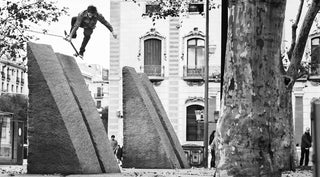For years and years, French conceptual artist Raphaël Zarka hid a very dark secret. At the top ranking art school he attended in the UK, at the Beaux-Arts in his hometown of Nîmes (South of France), in the art circles that he had started to frequent. No one knew.
But in 2003, he decided to come out. This whole time, as he was establishing a name for himself in the “serious” art world that would eventually lead him to exhibit at Paris’s Centre Pompidou or win a one-year residency at the Villa Medicis in Rome, he, err, had been, erm... skateboarding.
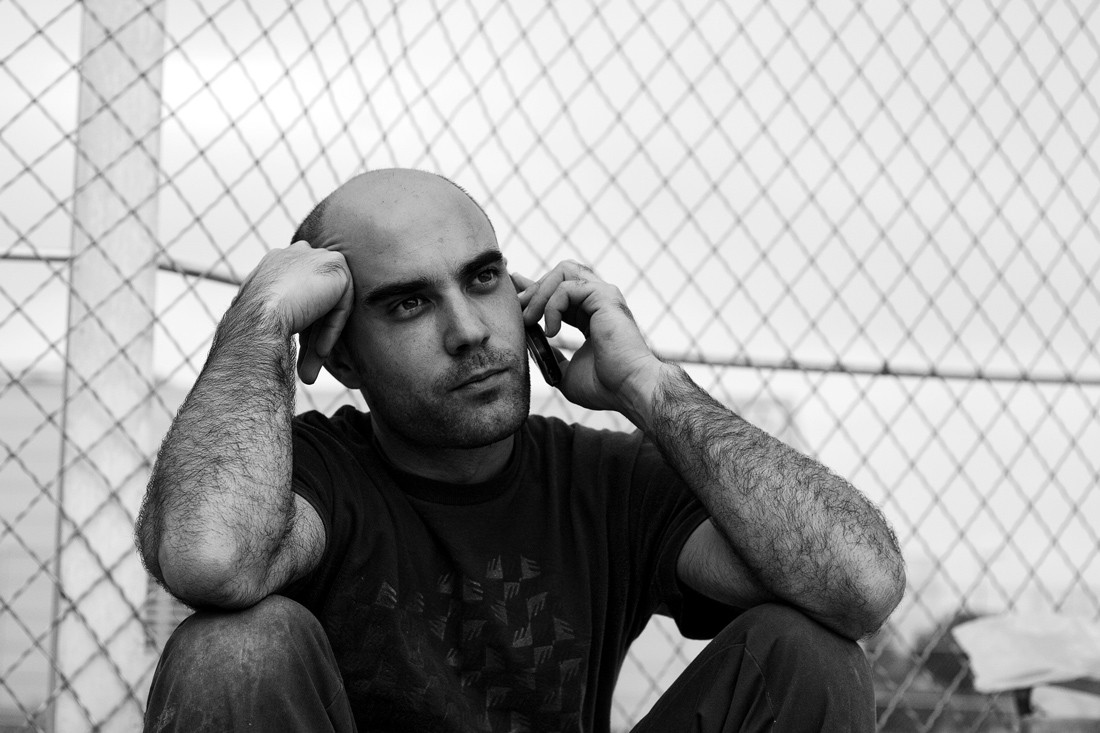
“At art school, I was making money on weekends giving these tours of the Maison Carrée, a Nîmes monument that was also our skate spot. I’d skate at night, and I was terrified that anyone from the monument would see me skate,” he confesses sarcastically. “I went through some sort of identity crisis: for my art to exist, I first needed to push my skateboard aside, so the object that defined me as a teenager and a person wouldn’t define me as an artist.” (Usually things happen the other way around, right? “Skateboard artists” claiming stripes they never earned to push some semblance of street cred.)
All jokes aside: Thankfully though, some bright day in 2003, Raphaël decided to reconcile with his skateboarding past and present. The long journey has led him to put out what I think is one of the best books about art and skateboarding: Riding Modern Art, a 152-page black-and-white compilation of 74 photographs of skaters skating public art pieces, all over the world, that took him roughly ten years to source in magazines or on the web—all meticulously captioned: name of skater (and trick of course), but also name, year, the installation skated, and of its artist.
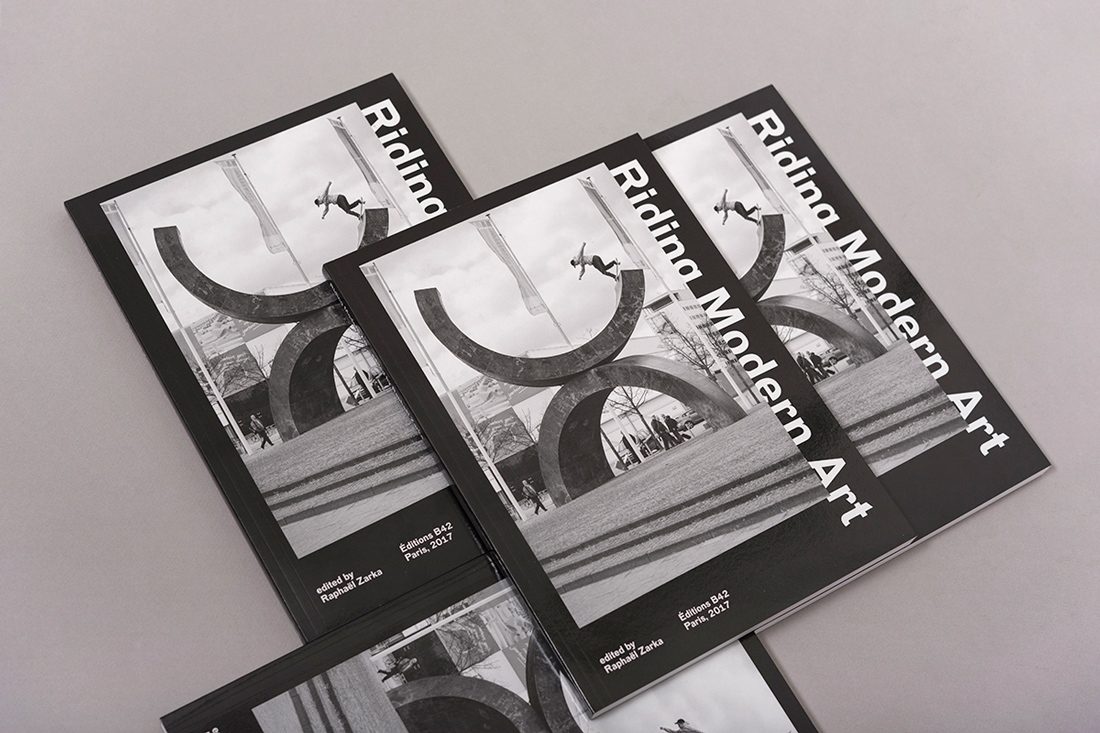
“The skater plays the piece. It’s a full-on performance.”
For Zarka, the whole idea started over ten years ago. Another epiphany: “Seeing a tiny skater on top of a sculpture on a Thrasher cover got me thinking that if the skater had been a performing artist addressing this art piece, it probably would have landed him on the Art Forum one,” he explains. Because to him, this is truly what skaters do: “Unlike the art critic, the skater isn’t looking for the ‘unsaid’ in an art piece, its hidden meaning. A skater doesn’t exactly ‘translate’ an art piece either, even though what he/she does is similar to a certain degree only. No—as an actor, or musician, the skater plays the piece. It’s a full-on performance.”
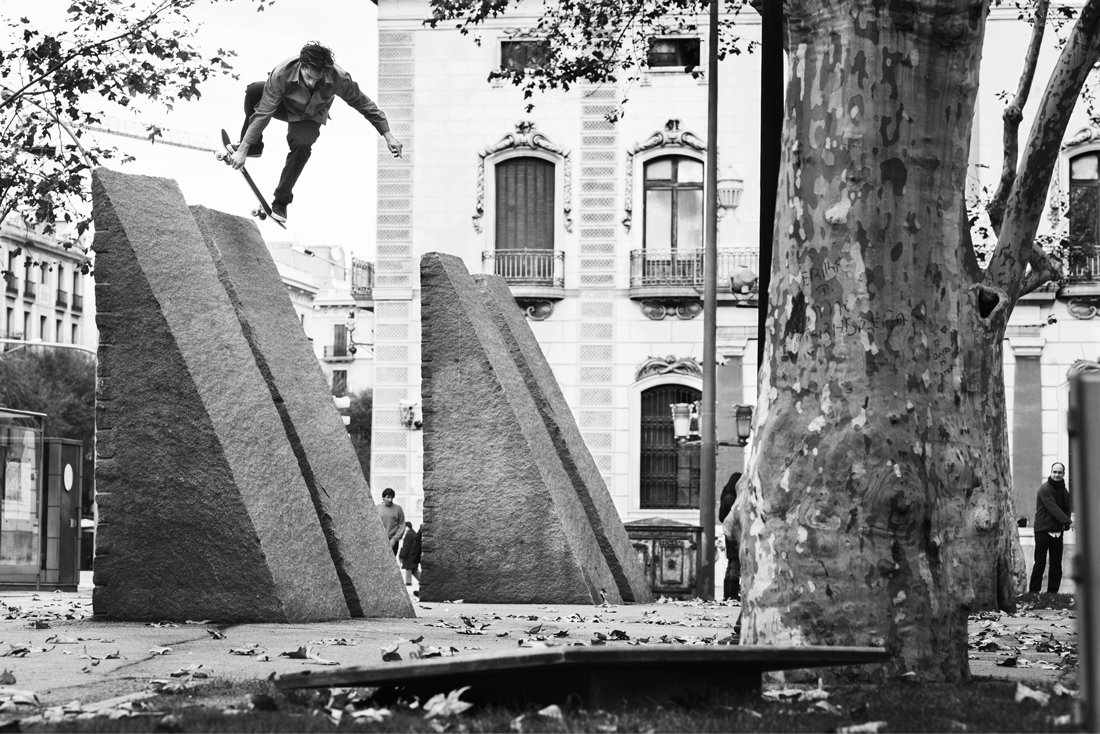
Struck by this proverbial lightning, Zarka first he put together a video loop compiling skaters riding public art sculptures, all lifted from YouTube or skate flicks. Almost surprisingly to us skateboarders, as we are more used to being kicked out of everywhere, Riding Modern Art, the video, earned him praises from the conceptual art crowd: “They actually loved to see public art pieces ridden by skaters, because the purpose of public art is a major question that conceptual art actually addresses all the time—it’s part of this type of art’s essence.”
After a few earlier works that saw him write two books (alas both in French) intertwining skateboarding and geometry, and shooting a video that followed a hunter’s dog “riding” the abandoned ski resort-style French skatepark Le RoolerGab, turning the Riding Modern Art video into a full-fledged book was the next logical step.
ROOLER GAB (2008), by Raphaël Zarka
The process turned out more tedious than probably expected.
To Zarka, the sculpture, the skater and the trick are equally important; this is one of the reasons why it took him a decade to achieve the book. He sometimes spent years of detective-style work to try and find the name of a public art piece that was skated in order to caption it properly. Such was the case for a picture of Jahmal Williams fakie flipping a sculpture—all he knew is that it was shot in Miami. He ended up finding the name of a street buried in the background, guessed that this looked like an university campus and heavily Googled to finally put a name on the work: For Miami, A Good Heart, by Jean Ward (1983). Repeat. 74 times.
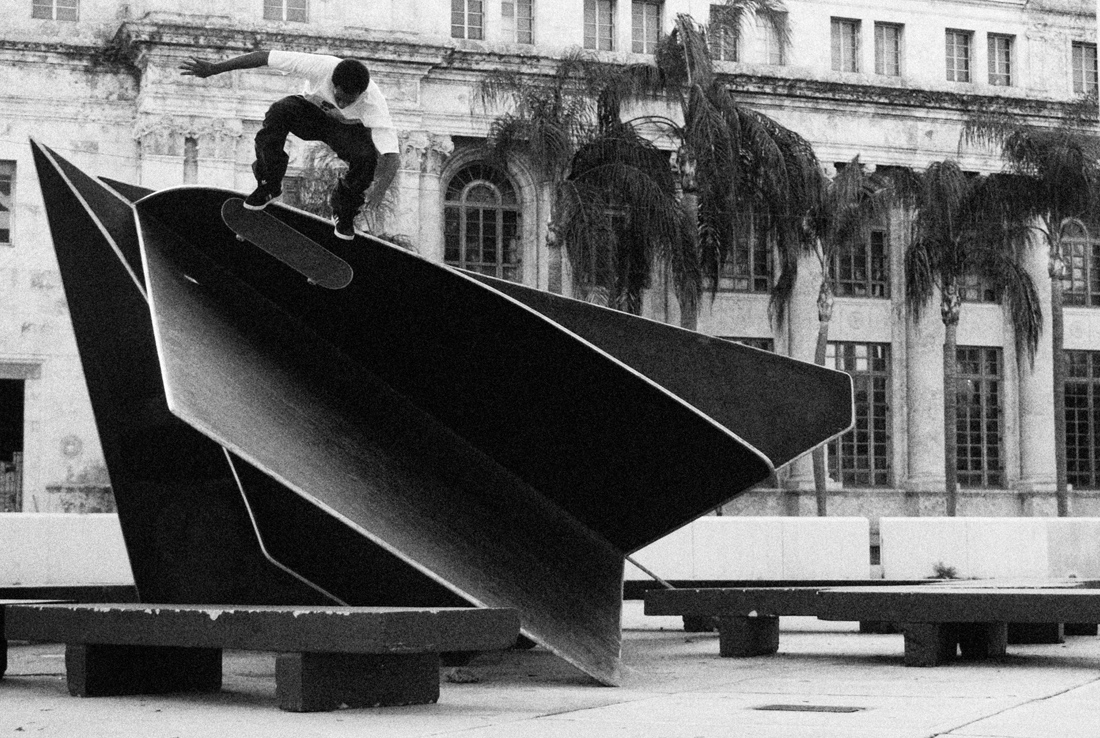
Another unexpected bump in the road: while art crowds are cool, some artists might be less lenient. A notorious case of un-flexibility regarding his public art is world-famous Richard Serra, who can’t stand seeing people touching his pieces even though there are in public spaces—so imagine him seeing people skate them, with the funny twist that both Serra’s nephews are heavily involved as skate pioneers in the NYC scene. “To be honest, Richard Serra’s so big that his studio refused that I used a photo of one of his pieces being skated, not him personally—I doubt he even got informed of my request,” Zarka concedes.
In the book, the reluctance of certain artists/sculptors to participate was made purposely visible: in true tongue-in-cheek fashion, Zarka left empty the double pagers he had prepared for them, but didn’t—of course—forget to leave the caption printed. Hence, the presence of these empty pages, more eloquent than if he had just shrugged them off. Punk’d!
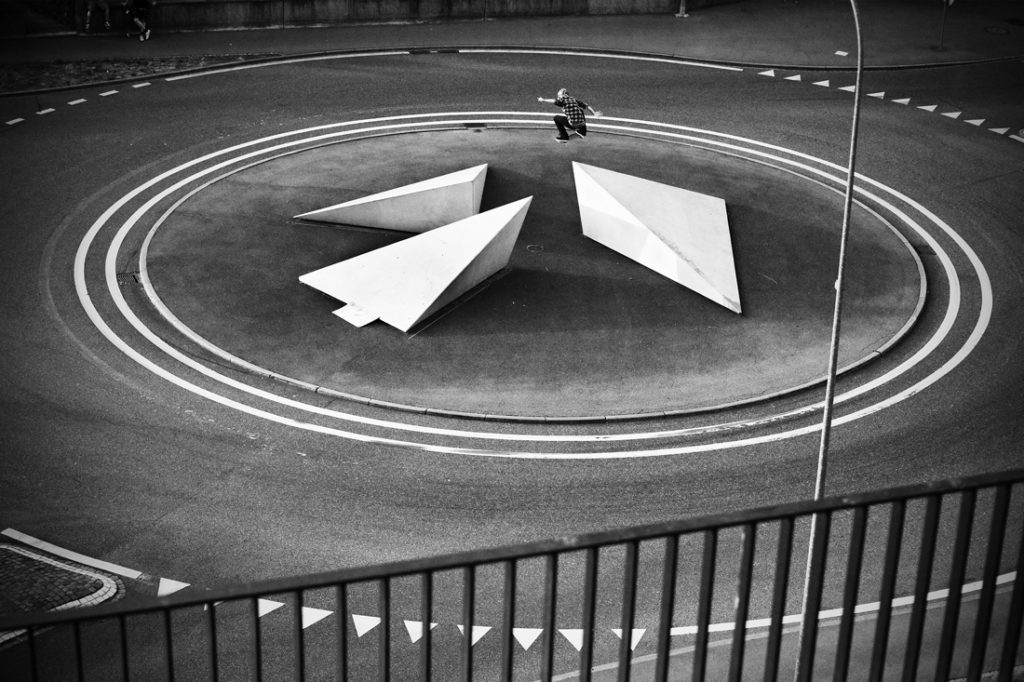
Besides Serra, why didn’t people such as Roger Berry or Bernar Venet allow Zarka to license a picture of their at being skated? “Most times, Raphaël downplays, it was more of a financial than an artistic problem: if an artist is negotiating with a city for the piece he did for them to be restored, he can’t really give the illusion that he encourages skaters to destroy it.” These case, though, were marginal: only four artists, out of 78 initially contacted, didn’t give their green light. On the other hand, some were more than happy to see skaters use their creations as ready-made skateparks. “[My work] Utblick/Insikt was 2016 elected to the Stone Award in Sweden as being the best Architecture and Public Art of the year,” Swedish sculptor Pål Svensson wrote to Zarka.
“Personally I am proud that it is being used by a lot of people in many different aspects, as resting, sitting, skating, viewing and photographing each other, or to make a selfie! For me it means that I am on the right track.”
***
Check out Riding Modern Art, edited by Raphaël Zarka at editions-b42.com.

